POST-BREEDING
As each 3 week cycle passes HerdInsights will identify any cows that are pregnant, have developed cysts or have lost embryos.
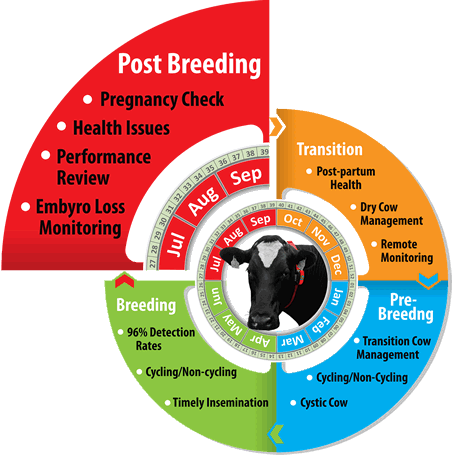
“By HerdInsights monitoring my cows for sickness and estrus from when the cow’s calf it gives me a chance to get in earlier and solve any issues I have so when I start breeding I know I am not wasting straws as I know all my cows can become pregnant.” – James McArdle, Co. Louth, Ireland. 200 collars
Key Focus Areas During This Period Include:
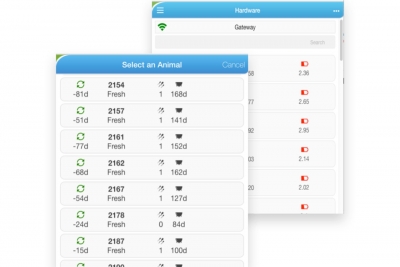 Pregnancy Check
Pregnancy Check
5 – 7 weeks after mating end date cows should be pregnancy tested:
- Confirm cows pregnant with AI dates early in the season
- Confirm pregnancies for cows that became pregnant to the bull and estimate expected calving date
- Identify non-pregnant cows – the target for non-pregnant cows should be <10%
Based on the pregnancy results you should now calculate your six week in calf rate
How Can HerdInsights Help?
- HerdInsights generates a Pregnancy Check Report relative to service date
- The report which is accessible by the farmer, vet and scanner will generate a list of cows that require scanning
- This report can then be used in creating accurate dry off and calving dates
For Further Information On Pregnancy Check Click On Headings Below
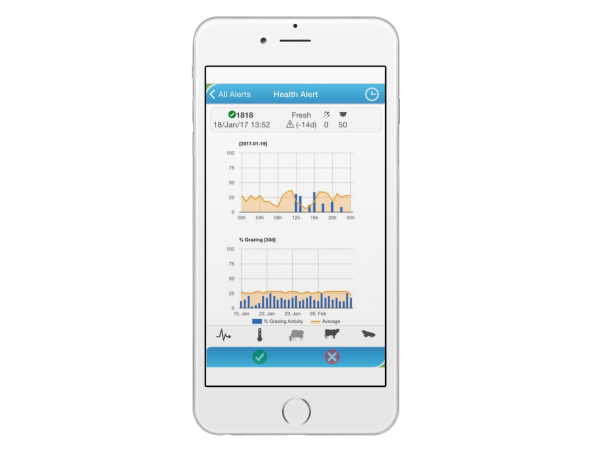 Health Issues
Health Issues
During this period the key health issues we are looking at are:
- Embryo losses
- Abortions
- General health
How Can HerdInsights Help?
- HerdInsights detects cows that have aborted or lost embryos by detecting the subsequent heat
- HerdInsights also enable management to evaluate the incidence rate of lost embryos and abortions enabling management decisions to be made around such things as genetics and nutrition
- Once treatment has commenced HerdInsights will enable farm management to monitor the effectiveness of the treatments by monitoring the animals feeding and resting behaviour
For Further Information On Health Issues Click On Headings Below
Performance Review
Reproductive performance can be can be measured in a number of ways, including open days, days to first service, submission rates, calving interval and six week in calf rate.
It is important to review a herds reproductive performance on a regular basis to establish:
- Which management decisions have been successful
- Which decisions require further review
- How is herd performance ultimately effecting profits
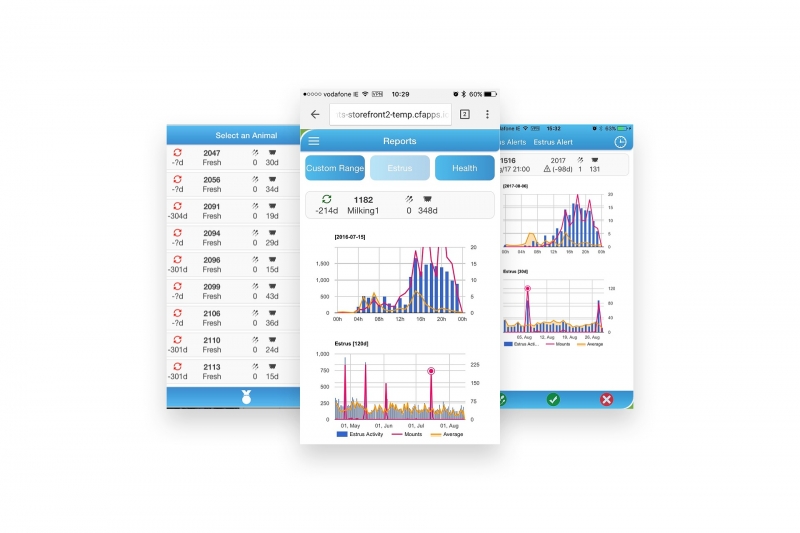
To review performance you must first establish current status, and the starting point is establishing your current pregnancy rate. Did you know……. Moving from a 23% pregnancy rate up to 26% would generate about $35 more profit per milking cow (De Vries)
The 6 week in calf rate is an on-farm reflection of:
- Management and staff performance and practices
- Cow performance
- Feed quality
- Herd genetics
- Herd health status
- Farm profitability
What is 6 Week In Calf Rate?
The percentage of the herd that gets in-calf during the first six weeks of mating.
Each 1% improvement in your 6 week in calf rate is worth €8.22 per cow per annum (Shalloo et al 2013)
How Can HerdInsights Help?
- HerdInsights generate automated reports at the click of a button which provide the key performance indicators required to ensure a profitable and sustainable business
- A farmer can track performance levels compared to previous results to determine the success of on farm decisions
- HerdInsight is not only an estrus and health monitor but an integral part behind your on farm decisions
For Further Information On Performance Review Click On Headings Below
 Embryo Loss Monitoring
Embryo Loss Monitoring
How many times have you had a cow diagnosed pregnant only to find at dry check that she has lost the fetus? Some level of embryonic loss is normal because it represents the loss of unhealthy embryos and although it can be minimised it can never be eliminated.
Embryonic mortality is generally defined as loss of the conceptus which occurs during the first 42 days of pregnancy, which is the period from conception to completion of differentiation when organ systems develop. Approximately 30 percent of all embryos and fetuses will not survive to birth. About 80 percent of this loss occurs before day 17, 10-15 percent between day 17 and 42 and 5 percent after day 42. (Penn State).
Whilst there are less incidence of late embryo losses over early embryo losses, the economic impact can be very serious particularly if its too late in your breeding season to rebreed.
How Can HerdInsights Help?
- HerdInsights, with a validated 96% heat detection rate, identify embryonic loss early. This early detection will give you the best opportunity to rebreed this cow within your breeding period and potentially save you a replacement cost
- Accross is an example of a cow that had two normal cycles which the cow was served to. The third heat cycle occurred 35 days from her last AI which signifies an embryonic death.



TESTIMONIAL
Prior to the system I had 16/17/5 of my herd not in calf that figure is now down to 5.5%, my figures are moving from average rates to top herd figures… I have more than achieved my goal, I have reduced labour, gained financially – the figures speak for themselves.

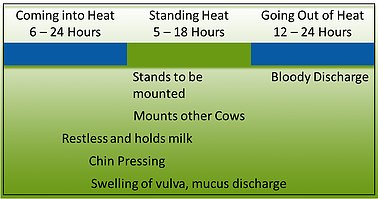 Within the Irish Dairy Industry the national average six week in calf rate is 56% (2014 ICBF data), well short of the 90% goal and at an estimated cost of €280 per cow per year.
Within the Irish Dairy Industry the national average six week in calf rate is 56% (2014 ICBF data), well short of the 90% goal and at an estimated cost of €280 per cow per year.